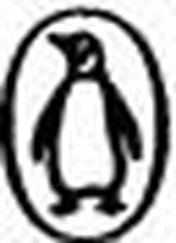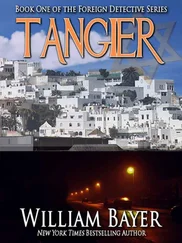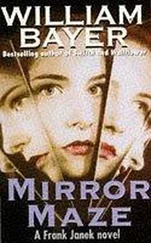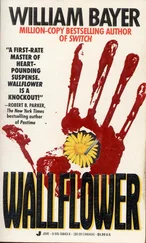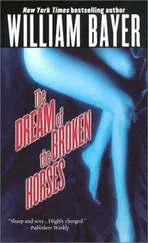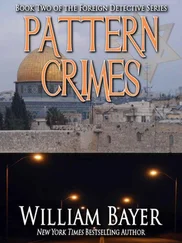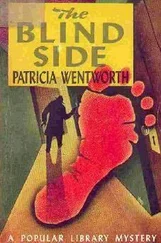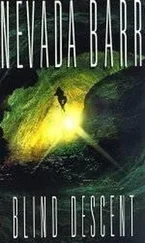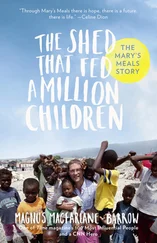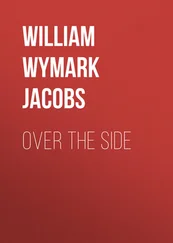William Bayer - Blind Side
Здесь есть возможность читать онлайн «William Bayer - Blind Side» весь текст электронной книги совершенно бесплатно (целиком полную версию без сокращений). В некоторых случаях можно слушать аудио, скачать через торрент в формате fb2 и присутствует краткое содержание. Жанр: Триллер, на английском языке. Описание произведения, (предисловие) а так же отзывы посетителей доступны на портале библиотеки ЛибКат.
- Название:Blind Side
- Автор:
- Жанр:
- Год:неизвестен
- ISBN:нет данных
- Рейтинг книги:4 / 5. Голосов: 1
-
Избранное:Добавить в избранное
- Отзывы:
-
Ваша оценка:
- 80
- 1
- 2
- 3
- 4
- 5
Blind Side: краткое содержание, описание и аннотация
Предлагаем к чтению аннотацию, описание, краткое содержание или предисловие (зависит от того, что написал сам автор книги «Blind Side»). Если вы не нашли необходимую информацию о книге — напишите в комментариях, мы постараемся отыскать её.
Blind Side — читать онлайн бесплатно полную книгу (весь текст) целиком
Ниже представлен текст книги, разбитый по страницам. Система сохранения места последней прочитанной страницы, позволяет с удобством читать онлайн бесплатно книгу «Blind Side», без необходимости каждый раз заново искать на чём Вы остановились. Поставьте закладку, и сможете в любой момент перейти на страницу, на которой закончили чтение.
Интервал:
Закладка:
"It's a good struggle. I think so, Geof-Frey." She looked at me, kissed Frank's head again, then slipped inside the house.
Frank and I remained out long after the sky turned black, catching up on everything, his kids, Mai's sculptures, his and my ambitions in photography.
"Fame, success-I know better than to care about that," he said.
"But I'd like just once to experience it, to know firsthand how it feels. I think then I'd have an easier time living out here renouncing it."
"The only trouble with that," I said, "you might find out that you like it."
"Yeah, Geof." He laughed.
"Well, isn't that the risk you take?"
The terrible splendor of the sunrise: In northern New Mexico it comes out of the Sangre de Cristo Mountains, comes fiercely, firing up the cold dry shrublands, reddening the salthush and the scrub. The yuccas, chollas and grasses begin to glow. The gullies, called arroyos, create the shadows, black slashes across the plain. Then, as the sun rises, you feel the first intimations of the heat.
By 6:30 the kitchen was busy, Mai presiding over the stove, supervising the frying of sausages, the turning of flapjacks by Jessie and Meg. When we all were fed, Frank piled me and the girls into the Land Rover and took off down a dirt road that followed the dry gulch called Galisteo Creek. He dropped the girls at the school bus stop near lose Cerrillos, then turned north toward Santa Fe.
His studio was situated on an upper floor of a restored warehouse on Guadalupe Street. Not the choicest area in that city of galleries, but, still, within walking distance of the Plaza. A sign on the door said: FRANK CORDERO, PHOTOGRAPHS. There was a big room, lit by track lights, where he exhibited his prints, a darkroom where he did black-and-white printing for two famous Santa Fe photographers, Leo DeSalle and Nelly Steele, and a small workshop where he kept the old cameras he found, rebuilt, then sold to collectors.
He was getting tired, he told me, of making more money from the cameras than from selling his own photographs.
"Sometimes I'm here the whole day, and no one comes in', not a single person. No need for anyone to buy anything@enough for me if they just come in and look."
He put a CLOSED FOR THE DAY sign on the door, then we got back into his car.
"Where're we going?"
"Old road to Taos," he said. "'We'll talk as we drive."
I told him the story, all of it, every detail from my first meeting with Kim on Desbrosses Street, to her seeing me off for Miami the morning before. He nodded as I spoke,
occasionally asked a question to clarify the sequence of events. Other than that, his only interruptions were the stops he made to show me the sites of famous photographs.
I welcomed these respites. It was stressful to tell my tale, and listening to myself recount it, I began to wonder about my role. Did I come off as hero or antihero, lover or fool? Frank didn't let on what he thought. But I could tell by his smile that he liked the way I'd handled Rakoubian. And I knew, despite his silence, that he was taking in everything I said.
Meantime I was thrilled to see the places where the legends of our profession had planted their tripods and created immortal images. We stopped before the old wooden cross that Eliot Porter had photographed on the outskirts of Truchas, and then the small grave marker Beaumont Newhall had found in the cemetery at Las Trampas. We visited the church in San Lorenzo Pueblo photographed so brilliantly by Laura Gilpin, and the Mission Church in Ranchos de Taos (perhaps the most photographed site in the American West) where Paul Strand had so gravely shot the buttresses.
In Taos we ate burritos, and all the while I continued to talk. Then Frank drove me around Mount Wheeler, past the D. H. Lawrence shrine, on to the ruins of "E-town," where Edward Weston had taken his famous series.
"Funny about these places," I said. "The spot where I took the PietA-1 doubt I'd recognize it today."
"Because that picture wasn't about a place. It was about people." He paused.
"I'll say one thing for this Kimberly of yours-she's got you shooting people again."
He pointed out something else to me too-that I'd returned to the Leica, the camera of my youth.
"It's like you went into this slow phase for a while, Geof, when you needed to use a view camera. But now your life has speeded up and you have to react more quickly. Maybe Jim Lynch was right-maybe you still are a photojournalist. Maybe the quick incisive look is your thing, not the slow examining gaze."
There was something special Frank wanted to show me, more important to him and more vivid than the subjects of other photographer's famous images. It lay just a few miles south of Eagle Nest.
He didn't say much as we approached, but I could tell by the way he was handling the wheel that a special emotion was brewing inside. Then, when I caught sight of the place, a soaring modern structure that seemed to grow out o the earth, I recognized it as a building I'd seen in several of the photographs on the walls of his gallery in Santa Fe.
As we turned up the drive he told me what it was, a Vietnam Veterans; Chapel built by the father of a marine killed in the war. It had since been taken over by the Disabled American Veterans, who now maintained it as a permanent memorial. There was only one other car in the parking lot, and th sat down not a single person inside the chapel. We bo on a semicircular bench that faced the tall narrow window at the high end. Then we stared at the only visible artifact, a tall cross bearing an eternal flame.
I was impressed by the purity of the interior, the opposite of the heavily decorated mission churches we'd been looking at. But what really moved me was Frank's reaction. He focused on the cross with enormous concentration, then his shoulders began to shake. After a time I decided to leave him alone. Later, when he rejoined me, his eyes were red.
"Gets to me," he said. "Don't know why. Feel it every time I come. it could be the design, the site. Maybe just the idea that a kid got killed and -his dad wanted to make a chapel to remember him, and when it was built it became a place to remember all the kids who died. How many years has it been, Geof? Twenty since we met? Fifteen since I finished my final tour'? And it still hurts, you know. Maybe because I got a Vietnamese wife, half-Vietnamese' kids, it's with me all the time. Maybe too because I don't want to forget it, not a single brutal moment…… around the exterior, he told He was calmer as, walking me how much he wanted to take a picture that would all he felt about the place. But he found the
C= t mes, c difficult to photograph. He'd ried many times
shooting in different seaons, and he'd even tried to put some people in his pictures, visiting veterans he'd posed against the stone.
"But that didn't work out," he said, "and anyway I'm no good at setting stuff up. Remember what you taught me, GeoP That basically there're only two ways to approach photography: you roam the world searching for images or you make your own."
"You like film noir, Geof. Remember The Woman in the Window?" I nodded. We were driving back to Santa Fe by the new road that runs along the Rio Grande.
"Edward G. Robinson explains blackmail to Joan Bennett. He makes a nice little speech.
" 'There are only three ways to deal with a blackmailer,' he tells her. 'You can pay him and pay him and pay him until you're penniless. Or you can call the police yourself and let your secret be known to the world. Or'-and here old Edward G. pauses for effect-'you can kill him." I remembered that nice little speech.
"That's what you're up against. I should say 'we' -because I want in if you'll take me after you've heard what I've got to say. I have some reservations. The girl bothers me a little. But even if she's not as straight as you think, I can deal with her unless she's very bad news."
Читать дальшеИнтервал:
Закладка:
Похожие книги на «Blind Side»
Представляем Вашему вниманию похожие книги на «Blind Side» списком для выбора. Мы отобрали схожую по названию и смыслу литературу в надежде предоставить читателям больше вариантов отыскать новые, интересные, ещё непрочитанные произведения.
Обсуждение, отзывы о книге «Blind Side» и просто собственные мнения читателей. Оставьте ваши комментарии, напишите, что Вы думаете о произведении, его смысле или главных героях. Укажите что конкретно понравилось, а что нет, и почему Вы так считаете.

